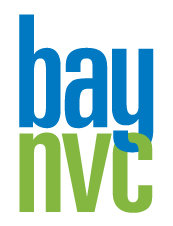by Miki Kashtan
When I talk with people about Nonviolent Communication and about empathy and authenticity, I often hear skepticism in the form of “Yes, but what about_______.” Frequent candidates for filling in the blank are teenagers that don’t respond to anything; Hitler; very angry people; and workplace situations. It seems many of us are habituated to thinking that empathy and authenticity belong only in some contexts and not others. Today I want to look at the workplace context, because so many of us are at work more of our awake time than anywhere else.
Can Connection and Effectiveness Coexist?
On the surface, it appears that the time it would take to reach mutual understanding and collaboration would detract from task-oriented focus, thus taking away from productivity and efficient decision-making. On closer look, I see at least three ways in which connection could enhance effectiveness. First, people who are heard and understood, have more goodwill to contribute. Second, people who are often operating within the fear and discomfort arising from conflict and mistrust literally have less of themselves available to produce. Lastly, when decisions and agreements are based on true connection and mutual understanding, such that “yes” is really a “yes,” people are much less likely to back out of what they said they would do.
How Can We Connect without Appearing “Touchy-Feely” to Others?
Rachel Naomi Remen tells in Kitchen Table Wisdom of two surgeons from the same department who were seeing her for therapy. Each of them said that he was the only one in the department who cared about patients, and that everyone else was there for the money, while she knew at least one other person in the department who also cared about patients and just didn’t show it. This story has stayed with me, because it helps me remember that no matter what the surface presentation is, everyone has a heart like mine underneath it. If I want to connect, to be present empathically and to show up authentically, whether in a workplace or anywhere else, I want to reach out to others in a way that is most comfortable for them. How can you do that?
For starters, be clear on the purpose of your reaching out. In particular, consider what amount of connection is needed to achieve the purpose at hand. More often than not, in my experience, people balk at the language of feelings and needs when the speaker is trying to connect without such clarity. In such instances often the speaker, eager and excited about using their newly acquired skills of empathy, ends up inviting more connection and especially more vulnerability than the culture of the workplace supports. In almost every situation it may be possible to find a way to express to others your understanding of what’s important to them without invoking language that’s challenging for them. For example, the act of pausing to reflect in and of itself supports relief of tension without requiring going into any depth of feelings.
Similarly, when choosing to express with more authenticity, you have a wide range of choices about what to say and how to say it. For myself, when I manage to be as conscious as I would like, I tend to focus my expression on those aspects of my experience that point to shared purpose with whomever I am speaking with. For example, if I want to say “no” to someone who asks me for something, I make a point of saying (if it’s true, of course) how much I want to support them and why it doesn’t work for me to do what they want. This is a way of tending to relationships. Whether in the workplace or anywhere else, everyone wants to know that they matter, and you can prioritize conveying that with sufficient clarity.
In short, put your empathy and your authenticity in the service of finding common ground and mutual understanding. My own choice of what I focus on is not random. To the best of my ability, I strategically offer transparency, authenticity, and empathic presence that are likely to support those goals. More often than not, this focus results in solutions that are likely to work for everyone involved.
More on empathy and authenticity in the workplace in the days and weeks to come. In the meantime, if you are inspired and want to learn more, I will be co-leading a 5-day intensive training May 10-14 called Making Collaboration Real: Empowering the Workplace with Nonviolent Communication. It would be lovely to meet some of my readers I don’t already know.
Saturday, April 24, 2010
Subscribe to:
Comments (Atom)

